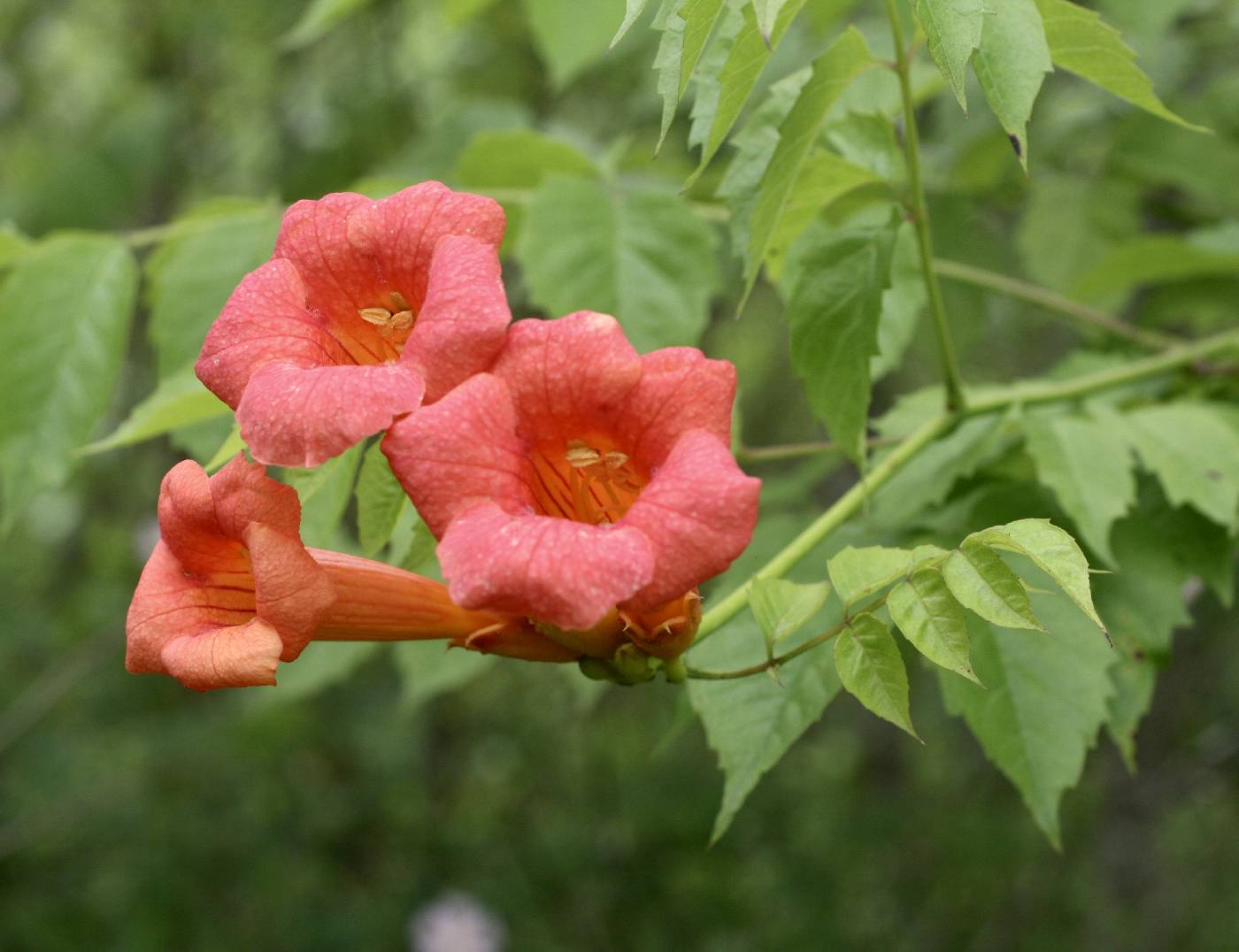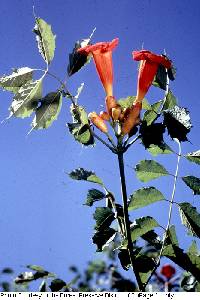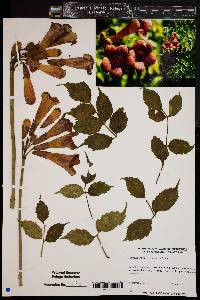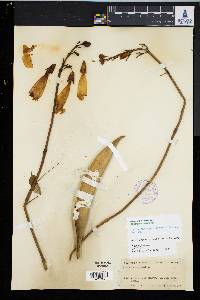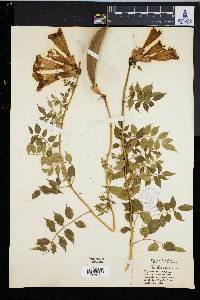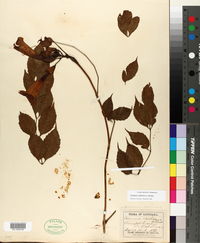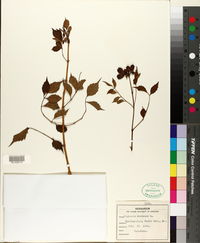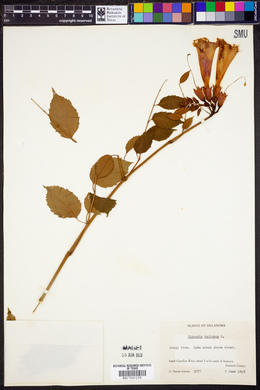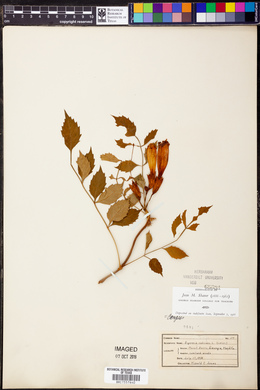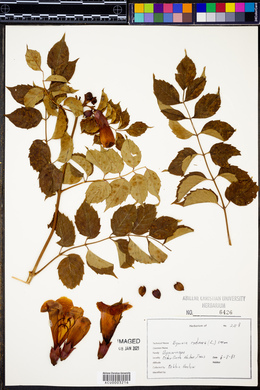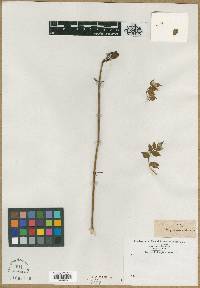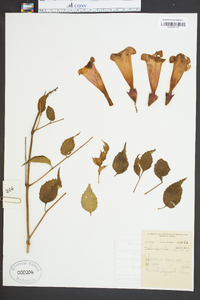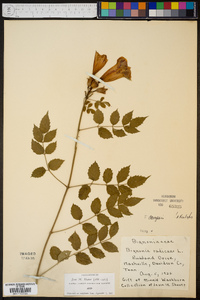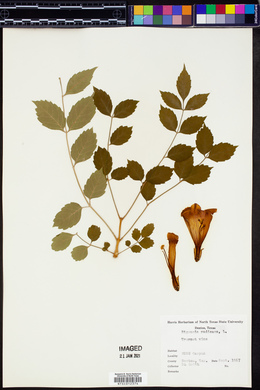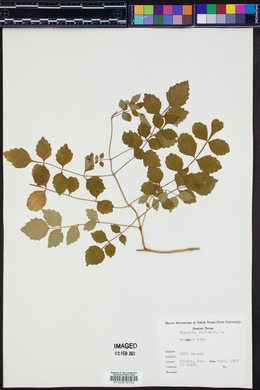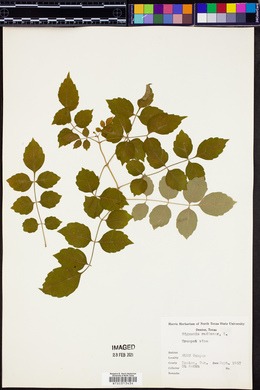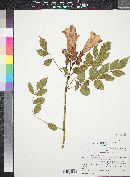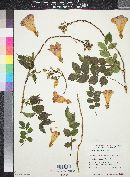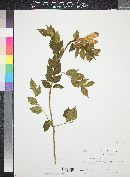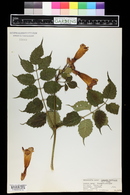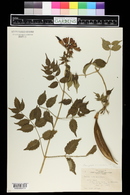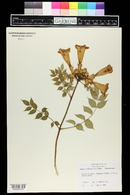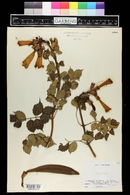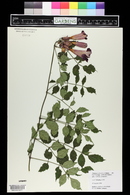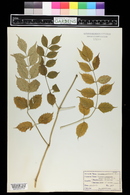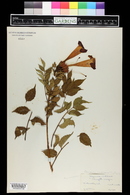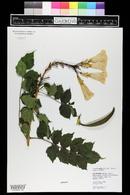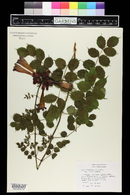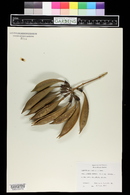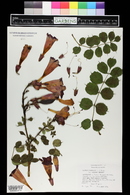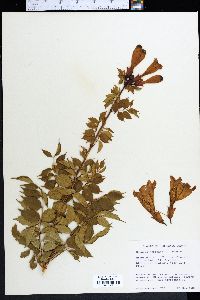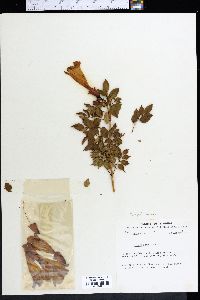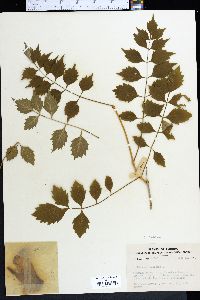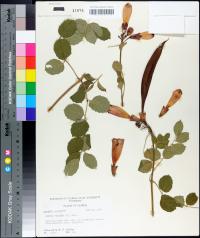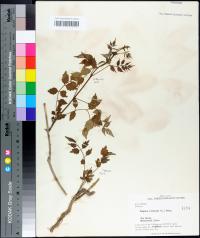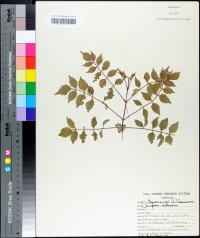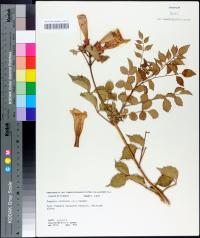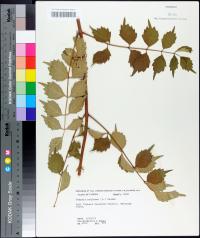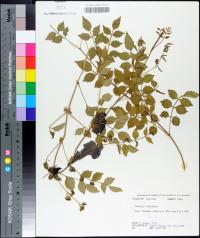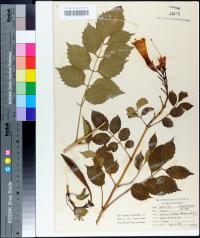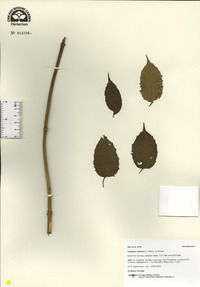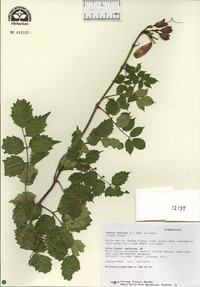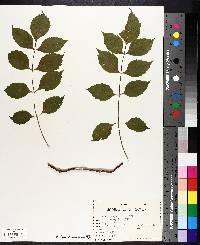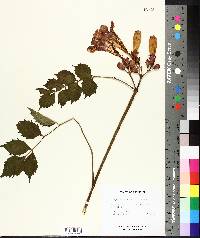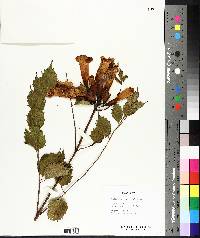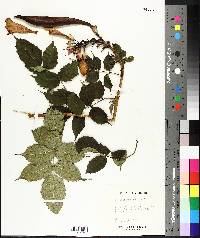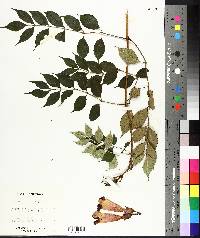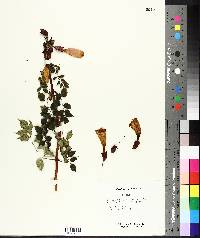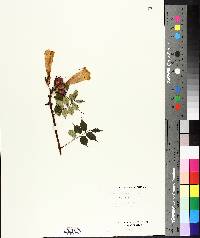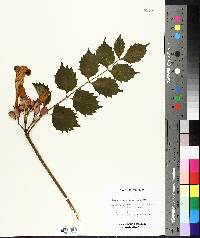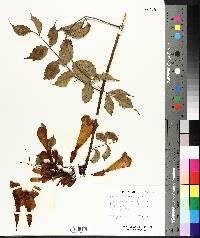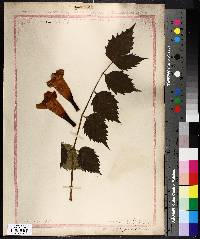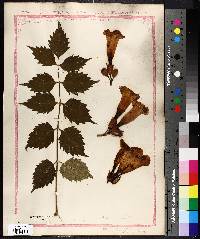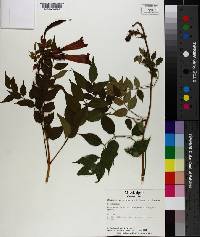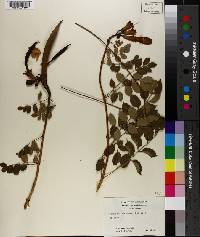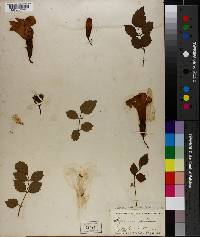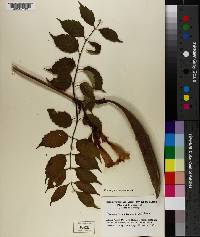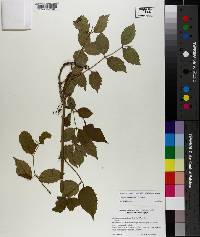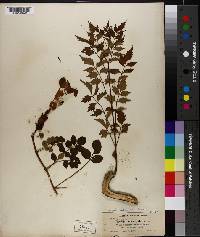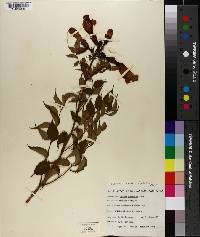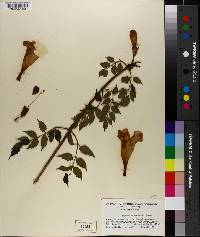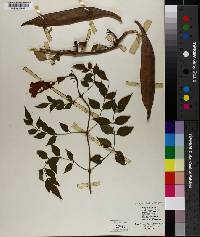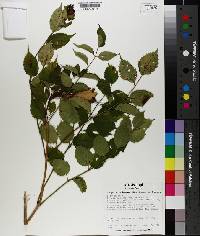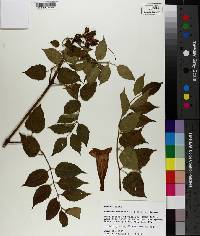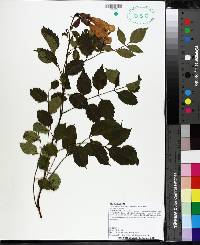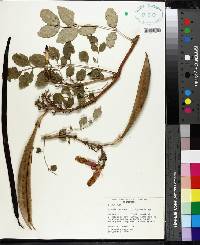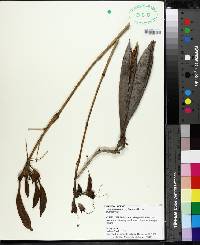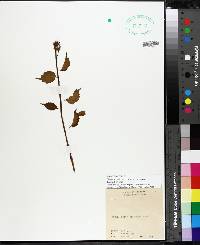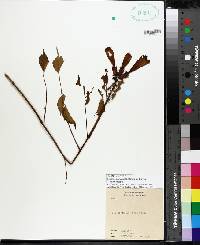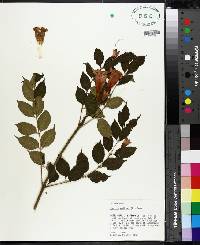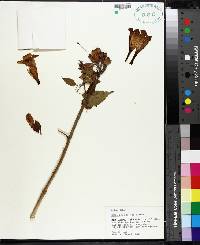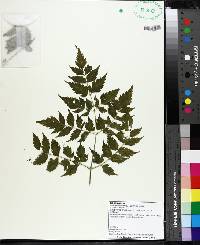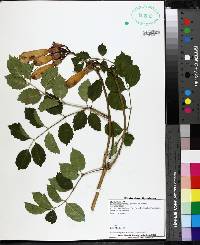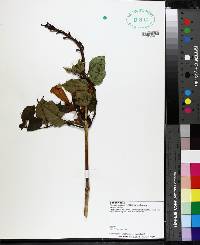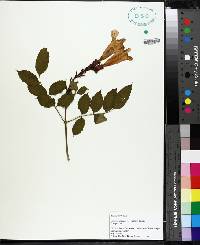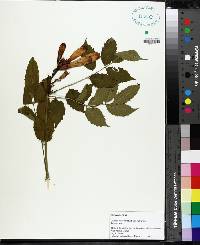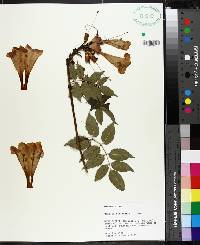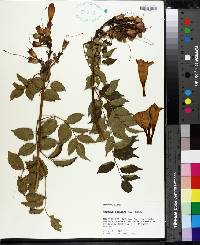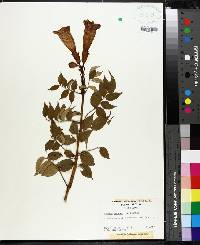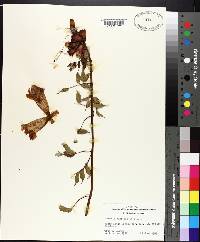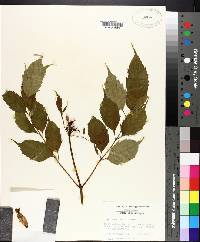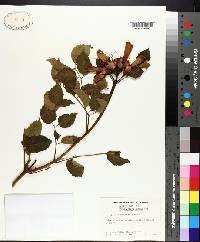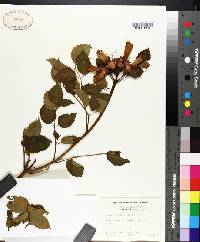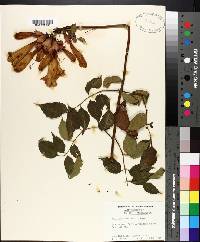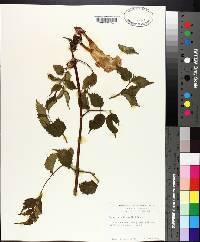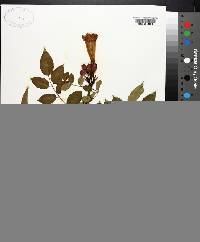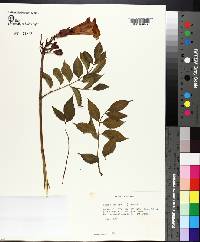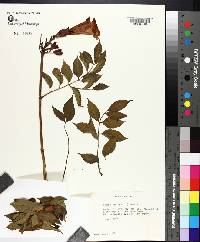Campsis radicans
|
|
|
|
Family: Bignoniaceae
Trumpet-Creeper, more...trumpet vine (es: corneta)
[Bignonia radicans L., moreCampsis radicans f. flava (Bosse) Rehder, Tecoma radicans (L.) Juss.] |
Perennial woody vine, climbing vertically or creeping horizontally using root-like holdfasts to 18.3 m long Leaves: opposite, stalked, pinnately compound, 20 - 38 cm long, with seven to thirteen leaflets. Flowers: borne in clusters of two to twelve at ends of stems, tubular, five-lobed, red to orange outside tube, yellow inside, 5 - 9 cm long. Fruit: a pod, green changing to brown, 5 - 15 cm long, splitting in half to release flattened seeds (2 cm long) with two transparent wings. Bark: yellow and smooth, becoming brown and shredded on older growth. Twigs: stiff, greenish red to light brown. Buds: small, triangular. Leaflet: stalked (winged), dark green above, paler beneath, 2 - 10 cm long, 1 - 5 cm wide, egg-shaped to oval, coarsely toothed, hairy-veined beneath. Similar species: Campsis radicans is a distinctive vine in the Chicago region. It has pinnately compound leaves, leaflets with coarsely toothed margins, stems with root-like holdfasts, trumpet-shaped red to orange flowers, and 5 - 15 cm long pods containing seeds with transparent wings. Flowering: mid June to mid September Habitat and ecology: Tolerant of most soil types, this vigorous species often escapes cultivation. It climbs trees, posts and fences or forms colonies along the ground in floodplains, fields, along roadsides, edges of woods, and near abandoned railroads. Occurence in the Chicago region: native Notes: Campsis radicans was introduced from the Southern U.S. as an ornamental vine. It attracts hummingbirds with its showy red flowers. However, it is an aggressive species that resprouts from broken roots underground. Some people may suffer from contact dermatitis after touching the leaves and flowers. Etymology: Campsis comes from the Greek word for curvature, referring to its curved stamens. Radicans means "with rooting stems." Author: The Morton Arboretum Stems to 10 m or more; petioles 2-8 cm; lfls 5-13, lanceolate to ovate, 4-8 cm, acuminate, sharply and coarsely serrate, rounded at base; infls terminal, crowded; cal- tube 10-15 mm, the lobes 5 mm, fls 6-8 cm; fr 10-15 cm, with 2 longitudinal ridges; seeds 1.5 cm; 2n=40. Moist woods, fence-rows, and roadsides; N.J. to O. and Io., s. to Fla. and Tex., and often escaped from cult. farther n. July, Aug. (Tecoma r.; Bignonia r.) Gleason, Henry A. & Cronquist, Arthur J. 1991. Manual of vascular plants of northeastern United States and adjacent Canada. lxxv + 910 pp. ©The New York Botanical Garden. All rights reserved. Used by permission. From Flora of Indiana (1940) by Charles C. Deam A vine trailing or climbing to a length of 40 feet. It is infrequent in woodland except in a few of the Lower Wabash Valley counties where it may be more or less frequent. It is rare to infrequent in all of northern Indiana. This species, however, produces an abundance of seed which grow easily when they come in contact with exposed soil, and it has become one of the most despised plants in the Lower Wabash Bottoms where it is known as shoestrings and hell vine. It grows so rapidly that in one or two years it is difficult to cultivate ground in which it becomes established. It prefers alluvial bottoms and wherever this vine is noted in such a habitat it should be destroyed or the capsules gathered and burned before the seed escape. It is ornamental and has been widely planted which accounts for its distribution. I doubt that it was a native of more than the Ohio River Counties and the Lower Wabash Valley. It is still being planted and recommended for ornamental planting but only by persons who are ignorant of its potential weedy nature. My advice is to exterminate it wherever found and never permit the vine to mature seed. ...... Indiana Coefficient of Conservatism: C = 1 Wetland Indicator Status: FACU |

